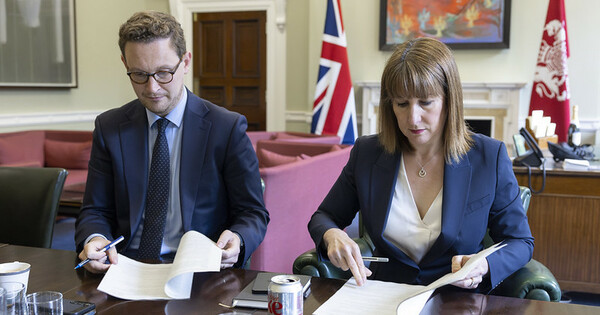
'I have made my choices': Rachel Reeves promises Spending Review will drive 'national renewal'
Business Green 5 months ago

layersDaily Sustainability Digest
Published about 12 hours ago
The UK construction sector is entering a decisive phase in its journey toward decarbonising the built environment, with government policy now aligned to accelerate low-carbon innovation. A £90 million expansion of the Heat Pump Investment Accelerator is set to strengthen domestic manufacturing capacity and underpin the forthcoming Clean Heat Mechanism. Sales quotas for low-carbon heating systems will compel the industry to move decisively away from gas boilers, reinforcing efforts to deliver net zero carbon buildings and low carbon design across residential and commercial projects. This shift integrates with broader goals around environmental sustainability in construction, transforming how heat technology and sustainable building design are embedded in national infrastructure renewal.
Show MorearticleFeatured News

UK's Chargepoint Network Grows: 100k More Planned
1 day ago

Government triples UK heat pump manufacturing funding to £90m
1 day ago

MARKET REPORT: Glass, metals, organics, plastics, textiles, wood October 2025
1 day ago

DEEP DIVE: ‘Six months in and GAP Alba is raring to go’
1 day ago

Survey: Drivers report 'overwhelming satisfaction' with EVs despite 'growing...
1 day ago

Government moves to cut energy costs for UK industry by £420m from next year
1 day ago
play_circleFeatured Videos

Dena Arabsolgar, Syxis
2 days ago

Jacopo Cassina, Syxis
2 days ago

Explore the PR24 WINEP interactive map: see where investment is improving the water environment
3 days ago

Why do circular business models fail to scale? Relying on a narrow business case
5 days ago

Why do circular business models fail to scale? Relying on a narrow business case
5 days ago

Designing Spaces for Learning | Kevin Higgs on Safety, Purpose & Net Zero
6 days ago
podcastsFeatured Podcasts

Maureen Waters on Powering Sustainability with Real Estate Data
3 days ago

Governing Climate Action: Massachusetts’ Strategy for Decarbonization and Resilience
3 days ago

Brackish - S6 E16 Bernadette Russell & Out Beyond Ideas of Wrongdoing and Rightdoing
4 days ago

Why do circular business models fail to scale? Relying on a narrow business case
5 days ago

Smarter Software Strategies with Jet.Build’s Adam Stark
5 days ago

169 Bailey Bestul: imaginative reuse of architectural components to create exciting and inspiring...
7 days ago
Get your opinion heard:
Whole Life Carbon is a platform for the entire construction industry—both in the UK and internationally. We track the latest publications, debates, and events related to whole life guidance and sustainability. If you have any enquiries or opinions to share, please do get in touch.











